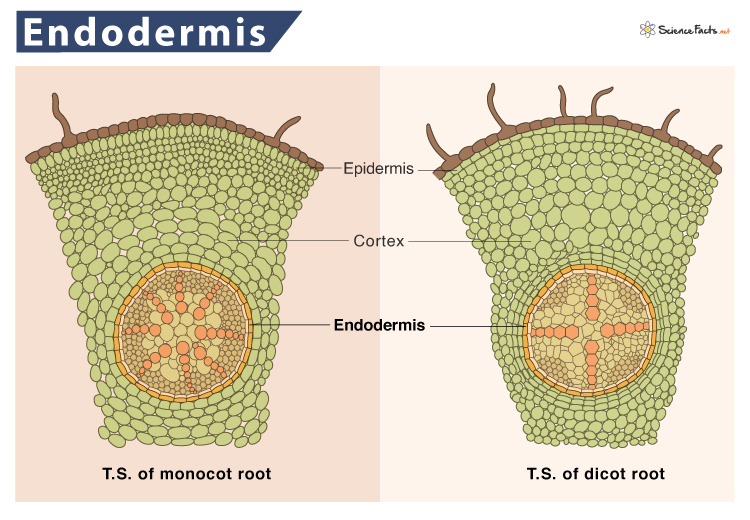In some seedless plants (like ferns and mosses), the endodermis is a visible layer of cells immediately outside the vascular cylinder (stele) in roots and shoots. In woody, seeded plants, the endodermis is present only in the roots. The endodermis serves as an impermeable barrier to the free diffusion of solutes from the soil into the stele. It thus helps to regulate the movement of water, ions, and hormones into and out of the vascular system.
Structure of Endodermis
What is the Function of the Endodermis
It acts as an impermeable barrier, providing an obstacle to the passage of water and any dissolved solutes via the apoplastic pathway. Water can only pass through the endodermis twice, once while entering and again while leaving the cell. Thus, endodermis allows the plant to control water flow in and out of the vascular tissues. Along with water, it also regulates the movement of ions and hormones that are dissolved in water. Other Roles
Storing reserve food as starch due to the presence of amyloplastsPreventing gas bubbles from entering the xylem, which keeps the water column continuous.Forming a waxy seal around a plant’s vascular tissue prevents the entry of harmful organisms and chemicals into the plant. Difference between Endodermis and Epidermis
